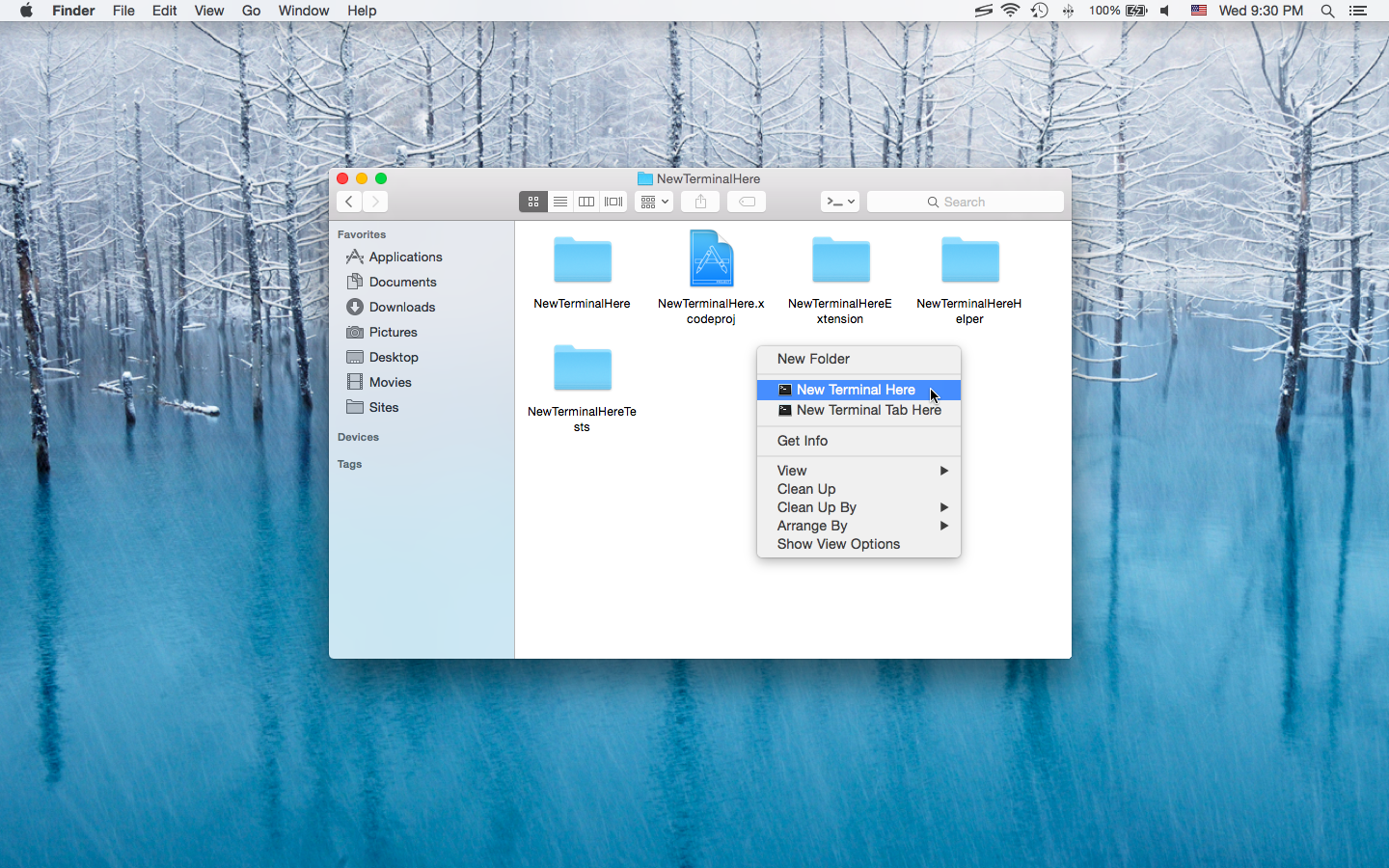

- Macos finder open terminal here how to#
- Macos finder open terminal here for mac#
- Macos finder open terminal here mac os#
- Macos finder open terminal here archive#
- Macos finder open terminal here download#
If a document window opened by certain application stays in frontmost, the folder containing the file will be the working directory of opened new terminal. I just got the folder opened in Finder by just typing Open. For example: As you can see I am at the path /Documents/TheMacBeginner in Terminal. The command to open the current folder from terminal is: Open. Select the folder, right-click on it, and go to Services > New Terminal at. Open current folder in Finder from Terminal. Main features: - If Finder is in frontmost, the working directory is Finders selected location. To open a Terminal window from within a folder in Finder, navigate to the folder you want. To begin, you’ll need to open the Terminal. Open in Terminal make a new terminal window of the working directory depending on the frontmost context. New Terminal Here allows you to open the current Finder folder in Terminal / iTerm2 / Hyper / kitty via the right-click context menu / toolbar item. The Search bar in every Finder window searches your entire system by default, but there's an option in Finder's preferences that lets you automatically limit.
Macos finder open terminal here how to#
How to Open Any Folder from the Mac Terminal Next, we show you how to get the job done. Given the above, it’s easy to see why you may want to have the knowledge. In the search box, type the search query. The finder icon is usually the first icon on the Dock.
Macos finder open terminal here for mac#

Instead, youll need to use the Terminal application, located in /Applications/. The first method to get your Finder back is to quit it forcefully and then see if it starts up normally again.
Macos finder open terminal here mac os#
We admit, using the Terminal to open folders isn’t a natural way to get around macOS. In Mac OS X, you wont find the command prompt in the Dock or on a Finder menu. But it’s not the only way to access files or folders within macOS. This is a Graphical User Interface (GUI), and it’s macOS’s directory navigation de jure. We also show you how to create a custom shortcut to carry out this command.Īlso read: How to Customize Your Mac’s Terminal for Better Productivity Why You’d Want to Open a Folder From the Mac TerminalĪs we noted, the preferred way of opening a folder is by using Finder. Drag Visual Studio Code.app to the Applications folder, making it available in the macOS Launchpad. Use double-click for some browsers or select the magnifying glass icon with Safari.
Macos finder open terminal here archive#
If archive, extract the archive contents.
Macos finder open terminal here download#
Sweet.As such, this post will show you how to open any folder from the macOS Terminal. Open the browsers download list and locate the downloaded app or archive. The options it offers are the default Terminal app. You will first be prompted to select which app you use to access the Terminal. Run the app and grant it the permission it needs to run. When I have a Mac Finder window in the foreground and run this script from the AppleScript menu on the MacOS menubar, it opens a Mac Terminal window, and automatically places me in the same directory as the current Finder folder. It’s a Finder add-on that can open Terminal in the current folder with the click of one button. Set thePath to (quoted form of POSIX path of (target of myWin as alias)) I couldn’t find any other way to do this, so I finally wrote an AppleScript script to do it. If you were to do open myTextFile.txt which is at your current location in the terminal open will decide to use a text editor instead. Apple/MacOS Terminal/Finder tip: This tutorial shows how to open a Mac Terminal window in the current Finder folder by using AppleScript.įor a while I have wanted to be able to open a Mac Terminal window in the same directory as the Mac Finder folder that I’m currently looking at. command just means path at current location (which would be a folder) so open decides that the correct application to use is Finder.


 0 kommentar(er)
0 kommentar(er)
